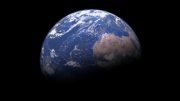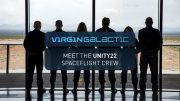02.12.2022
ESA has so much to look forward to in 2023: the exciting Juice mission to explore Jupiter’s icy moons will be launched, Euclid will embark on a quest for the ‘dark Universe’, Sentinel-1C will ensure continuity and provide a rich treasure of Earth observation data, the new generation of ESA astronauts will start their training and the inaugural launch of Ariane 6 from Europe’s Spaceport will top it all.
The list below gives media representatives an overview of the most important events on the agency’s agenda. Please note that the dates can be subject to change. ESA will inform about the precise dates closer to the actual events.
FIRST QUARTER 2023
ESA Director General Josef Aschbacher Annual Press Conference (ESA HQ Paris)
Date: 23 January 2023 (virtual participation is also possible)
15th European Space Conference: Securing the Future of Europe in Space (Brussels)
Date: 24-25 January 2023
Organised by Business Bridge Europe, the yearly high-level gathering of the key stakeholders of the European space domain will return to the Egmont Palace in Brussels. Like the previous annual editions, this upcoming gathering will bring together on site and online, high-level decision makers from across EU institutions and Member States, ESA, high-level representatives of industry, civil society and researchers.
More information: https://spaceconference.eu/
Artemis press event at Airbus, Bremen
Date: 26 January 2023
Visit to the clean room to see the European Service Modules ESM 3, 4 and 5
Farewell event for Jupiter mission in Toulouse
Date: 13 January 2023 TBC
More information: https://www.esa.int/Science_Exploration/Space_Science/Juice
Earth Observation mission EarthCARE media event (ESA-ESTEC)
Date: February-March 2023 TBC
The Earth Cloud Aerosol and Radiation Explorer (EarthCARE) satellite mission will advance our understanding of the role that clouds and aerosols play in reflecting incident solar radiation back out to space and trapping infrared radiation emitted from Earth’s surface.
More information:https://www.esa.int/Applications/Observing_the_Earth/FutureEO/EarthCARE
Meteosat Third Generation (MTG) first image event
Date: February/March 2023
More information to come early in 2023.
SECOND QUARTER 2023
Start of Training – New Astronaut Class of 2022
Date: April 2023 tbc.
More information: https://www.esa.int/Science_Exploration/Human_and_Robotic_Exploration/ESA_presents_new_generation_of_astronauts
On 23 November 2022, ESA presented 17 new astronaut candidates from more than 22 500 applicants from across its Member States: 11 members of a newly created astronaut reserve, one astronaut with a physical disability and five career astronauts. The latter will start their basic training at the beginning of the fourth quarter of 2023. Exact date to be confirmed.
Launch of Juice mission to Jupiter from Europe’s Spaceport, French Guiana
Launch window: 14-30 April 2023
Juice will characterise Jupiter’s icy moons – Ganymede, Europa and Callisto – as planetary objects and potential habitats, explore Jupiter’s complex environment in depth and examine the jovian system as a model for gas giants throughout the Universe. JUICE will be launched on the last Ariane 5 launch.
More information: https://www.esa.int/Science_Exploration/Space_Science/Juice_factsheet
Launch of Sentinel-1C, third Copernicus Sentinel-1 satellite
Launch window: May-June 2023
The ambitious Sentinel-1 mission, equipped with advanced radar technology and providing day and night images of Earth’s surface, has not only raised the bar for space-based radars, but also set the stage for Copernicus, the Earth observation component of the EU’s space programme.
More information: https://www.esa.int/Applications/Observing_the_Earth/Copernicus/Sentinel-1
THIRD QUARTER 2023
International Paris Air Show, Space Salon, Le Bourget
Date: 19 – 25 June 2023
More information: https://www.siae.fr/
Aeolus reentry from space
Date: May-Sep timeframe
ESA’s pioneering ‘wind mission’ Aeolus has reached the end of its service life in orbit. ESA is now studying options for its reentry, with further details to be confirmed during the first quarter of 2023.
More information:
https://www.esa.int/Enabling_Support/Operations/Aeolus_operations
https://www.esa.int/Applications/Observing_the_Earth/FutureEO/Aeolus
Launch of Euclid satellite
Launch window: July – September 2023
Euclid was developed to explore the evolution of the ‘dark Universe’. It will create a 3D map of the Universe (with time as the third dimension) by observing billions of galaxies at up to 10 billion light-years, or over more than a third of the sky.
More information: https://www.esa.int/Science_Exploration/Space_Science/Euclid_overview
ESA astronaut Andreas Mogensen’s Huginn mission
Date: August 2023
Andreas Mogensen, from Denmark, is ESA’s next astronaut to fly to the ISS for a six-month mission
focused on science in orbit.
More information:
https://www.esa.int/Science_Exploration/Human_and_Robotic_Exploration/Introducing_Huginn
LAST QUARTER 2023
Space Summit
Date: November 2023
Potential Inaugural flight of Ariane 6 launch vehicle from Europe’s Spaceport, French Guiana
Date: Q4
Ariane 6 will have the flexibility to launch both heavy and light payloads to a wide range of orbits for applications such as Earth observation, telecommunication, meteorology, science and navigation.
More information:
https://www.esa.int/Enabling_Support/Space_Transportation/Launch_vehicles/Ariane_6
Follow ESA on:
Twitter: @esa
Facebook: @EuropeanSpaceAgency
Instagram: @europeanspaceagency
YouTube: ESA
LinkedIn: European Space Agency – ESA
Pinterest: European Space Agency – ESA
About the European Space Agency
The European Space Agency (ESA) provides Europe’s gateway to space.
ESA is an intergovernmental organisation, created in 1975, with the mission to shape the development of Europe’s space capability and ensure that investment in space delivers benefits to the citizens of Europe and the world.
ESA has 22 Member States: Austria, Belgium, the Czech Republic, Denmark, Estonia, Finland, France, Germany, Greece, Hungary, Ireland, Italy, Luxembourg, the Netherlands, Norway, Poland, Portugal, Romania, Spain, Sweden, Switzerland and the United Kingdom. Slovakia, Slovenia, Latvia and Lithuania are Associate Members.
ESA has established formal cooperation with four Member States of the EU. Canada takes part in some ESA programmes under a Cooperation Agreement.
By coordinating the financial and intellectual resources of its members, ESA can undertake programmes and activities far beyond the scope of any single European country. It is working in particular with the EU on implementing the Galileo and Copernicus programmes as well as with Eumetsat for the development of meteorological missions.
Source: ESA at www.esa.int














Be the first to comment on "ESA agenda"